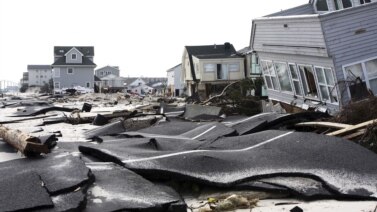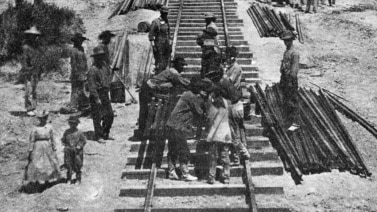Antarctica is covered with ice that extends past the land and floats on the sea in thick shelves. But those ice shelves are melting quickly. As they melt, the sea level rises, increasing the risk of damaging floods.
Scientists have developed a new way to monitor the temperature of the ice shelf and how fast it is melting. They are using a fiber optic cable — like the one connected to your television or home computer. But this cable is as thin as a human hair. And, it is covered with steel to protect it from ocean pressure.
Scott Tyler teaches at the University of Nevada in Reno. Professor Tyler is a specialist in hydrology – the movement and quality of water on Earth and other planets. He described the work with fiber optic cable in the journal Research Letters.
Professor Tyler said researchers set up a base camp on the Ross Ice Shelf. They made a hole in the ice 200 meters deep. Then, they extended the cable 700 meters down into the hole.
He says the scientists had to work fast.
“The ice shelf temperature is cold. It’s minus 23 C (Celsius). So, it is very cold ice. So the ocean wanted to freeze. And so we figured, we calculated that we had about at minimum 20 minutes of time to get everything down there, down this little, tiny 50-millimeter diameter hole into the ocean before it would freeze solid. And, we did!”
Researchers connected the other end of the cable into equipment on the surface. Images began to appear on the computer screen of what was happening down below. The researchers also learned how cold it was at the other end of the cable.
He added that researchers could operate the equipment remotely. In other words, they did not have to be on the ice shelf.
“That’s right. We can talk to it by satellite modem, so satellite, basically satellite telephone. It is probably a little bit like when they are working the Mars Rover. It takes a long time to get any information back and forth, but it worked generally most of the time.”
The National Science Foundation provided financing for the project. It proved that the technology works.
Mr. Tyler says he hopes to create more fiber optic stations on ice shelves. While satellites can show changes from space, he said, fiber optics can record those changes under ice.
I’m Anne Ball.
Words in This Story
monitor - v. to observe for a special purpose over a period of time
fiber optic - adj. with thin threads of glass or plastic to carry very large amounts of information in the form of light signals
calculated - v. found a number using a mathematical process
diameter - n. the distance through the center of something from one side to the other
Now it’s your turn to use these Words in this Story. In the comments section, write a sentence using one of these words and we will provide feedback on your use of vocabulary and grammar.





